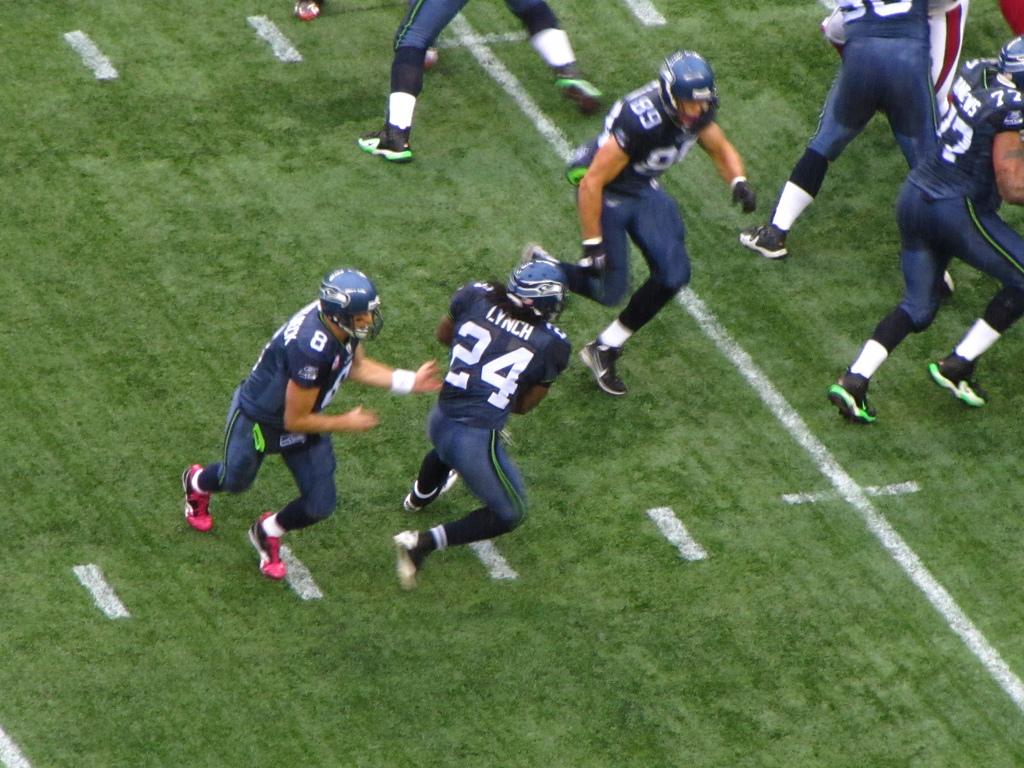
Outside of Kenbrell Thompkins and Shane Vereen, I haven’t been a close observer of Patriots training camp. However, I heard there might be some use of Tebow as a tight end and it got me thinking of how I’d use Tim Tebow if I were New England’s offensive coordinator.
The Obvious
I’d be shocked if the Patriots don’t use Tebow on read-option plays in the red zone at least on a few plays a year. I don’t think it will happen a lot, because taking Tom Brady off the field is foolish. However, I think it will be difficult for the Patriots coaching staff to resist the temptation against some weaker run teams.
The reason is Rob Gronkowski’s strength as a run blocker combined with Zach Sudfeld’s experience as a wing back/H-back in Chris Ault’s Pistol sets as a lead blocker – much like Chris Brown described in his recent Grantland piece. This two-tight end personnel with Sudfeld a better lead blocker than Aaron Hernandez ever was could provide a short-yardage power element and increase the versatility of the set. I’ll illustrate the wrinkle I’d use later.
Tim Tebow Tight End?
I’ve heard this is a possibility and it’s the red zone sets where I think the Patriots would implement it. Think about Mike Vrabel’s work as a red zone tight end and I think we can expect similar looks to Tebow – especially with teams focused on Gronkowski. If the rookie Sudfeld – a 6’7″ specimen with skill to adjust to the football – plays to his potential, opposing defenses could lose track of Tebow as a receiver.
Using Tebow at tight end also creates additional formation flexibility where the Patriots can adjust before the snap:
- Shift Gronkowski or Sudfeld away from the formation.
- Shift Tebow to the backfield as a runner or quarterback.
- Hand the ball the Ridley to an unbalanced strong side with Tebow as a fullback/H-Back.
- Use unbalanced sets with Tebow on the wing to dictate a numbers advantage to one side and then throw backside crosses, slants, and jerk routes to receivers.
There’s a lot that Tebow’s presence can do for red zone packages. My favorite is the last one below.
Two-Quarterback Backfield
This setup could create a lot of options for an offense in the red zone. First, it’s an unbalanced set with two versatile tight ends. Brady could shift the tight ends to balance the line. Or, if the shift would place one or both of the tight ends in a match up advantage with a linebacker, nickel corner, or safety of preference, they could spread the field.
But what I love most about this look is that Tebow could run, pass, or catch from his alignment. Placing Tebow behind Sudfeld on the wing provides enormous flexibility in the run game. If the defensive numbers are stacked to the strong side, they can run a counter with Sudfeld as a lead blocker and the twin receivers slanting inside to seal the inside.
If the defenses has even distribution, Tebow can run behind the strong side with good blocks ahead. The Patriots could do this with a direct snap to Tebow or an exchange from Brady.
And it’s this split of the quarterbacks over the guards that could force defenses to guess which player is getting the ball. Teams will guess run if it goes to Tebow, pass to Brady. But Tebow has proven he can deliver the ball in the red zone and there will be times he will have easy throws to Gronkowski or Sudfeld and even easier passes to his left (his natural side) to the backside receivers.
If teams are too aggressive playing Tebow, Brady also could have some easy throws. Plus, I’d use two of Shane Vereen, Julian Edelman (if ready), and Danny Amendola as my receivers. I could incorporate some Wildcat with Tebow and Vereen/Edelman motioning from the outside towards the formation. Now there’s the possibility of zone-read, Wild Cat, and guessing which quarterback gets the snap.
If you’re fan of the team or have been monitoring training camp, let me know if what I describe below is happening in practices.












